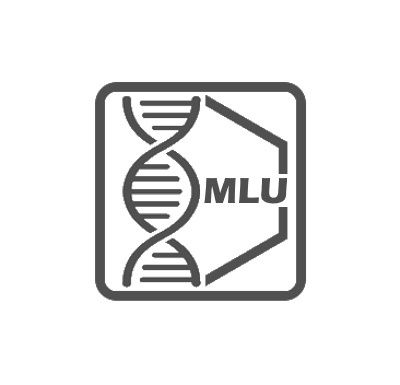Milton T. Stubbs, Kirsten Bacia and Jochen Balbach
Prof. Milton T. Stubbs

Prof. Stubbs (at top of the picture) with his research group
Institute for Biochemistry and Biotechnology/Physical Biotechnology
Kurt-Mothes-Straße 3
06120 Halle (Saale)
phone: +49 (0) 345-55 24901
milton.stubbs@biochemtech.uni-halle.de
Dr. Kirsten Bacia

Institute of Chemistry/Physical Chemistry
Von-Danckelmann-Platz 4
06120 Halle (Saale)
phone: +49 (0) 345-55 24924
kirsten.bacia@chemie.uni-halle.de
Prof. Jochen Balbach

Institute for Physics/Biophysics
Betty-Heimann-Straße 7
06120 Halle (Saale)
phone: +49 (0) 345-55 28550
jochen.balbach@physik.uni-halle.de
Dr. Anntette Meister
FoSP Materialwissenschaften - Nanostrukturierte Materialien
Von-Seckendorff-Platz 1
06120 Halle
phone: +49 (0) 345-55 24935
annette.meister@chemie.uni-halle.de
Establishment of a cryo-electron microscopy expertise centre (supported jointly by the Landesforschungsschwerpunkt Nanostrukturierte Materialien)
Knowledge of the structural and dynamic nature of proteins is practically indispensable for an understanding of their function. Through broadly based collaborative projects, Halle has placed a major emphasis on research into protein structure, dynamics and function in molecular communication processes. The high resolution techniques of X-ray crystallography and NMR are now well established within the Mitteldeutsches Zentrum für Struktur und Dynamik der Proteine (MZP), and structural biology has been integrated into a variety of collaborative initiatives.
The MZP offers State-of-the-Art facilities for the advanced analysis of conformational features of proteins and macromolecular complexes. There remains however a ‘resolution gap’ between the near atomic methods of crystallography and NMR and optical microscopy. This gap can be bridged by modern techniques in cryo-EM. Technological advances in cryo-EM have pushed the limits for biological specimens to near atomic resolution. In addition to the exploration of two-dimensional crystals (ideally predisposed to the study of membrane proteins), it is now possible to study single particles of macromolecular complexes, providing a whole new dimension to structural biology. The recent use of cryo-electron tomography in imaging entire cells highlights the promise of this technique for the study of whole cells and organisms.
A variety of groups in Halle have initiated projects involving cryo-EM, largely through external collaborations. The steadily increasing interest in this method in both the “protein” and the “polymer” areas has led us to establish and implement the techniques of cryoEM in Halle, headed by PD Dr. Annette Meister. Under the auspices of the MZP, Dr. Meister is responsible for cooperating with interested parties, as well as for performing feasibility studies on new collaborative projects.




